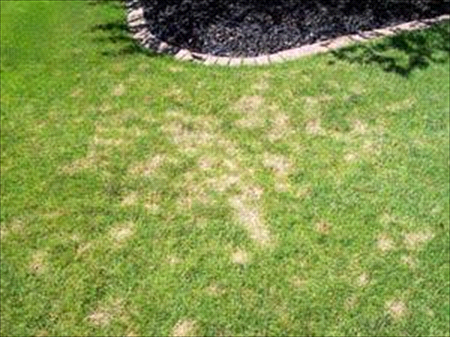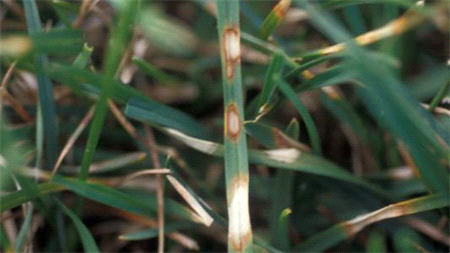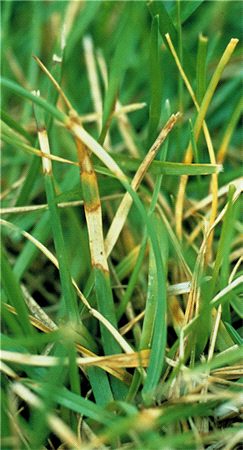Your Cart

LEARN YOUR LAWN: Dollar Spot
Request a Quote
Dollar Spot is a fungal disease that can affect residential lawns, particularly those with cool-season grasses like Kentucky Bluegrass, Perennial Ryegrass, and Fine Fescue. It’s called Dollar Spot because the affected areas typically show up as straw or tan coloured spots that are small, round, and the size of a silver dollar. The spots may also have a reddish-brown border. In severe cases, the spots may merge and form larger patches of dead or dying grass. This disease is caused by the fungus Sclerotinia homoeocarpa, which thrives in warm, humid conditions and spreads through the grass blades by contact or through the air. It can also be spread by mowing equipment, shoes, and other lawn tools. Dollar Spot is very difficult to control, as it thrives in hot and humid weather conditions. In most cases, the spread of Dollar Spot disease will be reduced by changes in temperature and weather, but you can also adjust some cultural practices to improve the health of the lawn and limit the spread of Dollar Spot disease. However, depending on the size of the infestation and the scope of the damage, other forms of control may be necessary and you may need to repair heavily damaged areas with sod or the appropriate grass seed. A thick, healthy, well-maintained lawn is the best line of defense. Here’s how you can adjust your beneficial cultural practices to reduce the spread of Dollar Spot disease: Avoid Watering: Under normal circumstances, you should be watering each area of your lawn for 30-45 minutes, twice per week, in the early morning so the turf is dry by nightfall. However, you should avoid watering when the disease is active, as it thrives with moisture. Avoid Mowing: You should avoid mowing when the disease is active. If you do have to mow, make sure your mower blade is razor sharp, so that the blade does not fray the tips of the grass, spreading the disease. Maintain a regular mowing schedule throughout the growing season. In general, you should keep your lawn between 2 ½ and 3 ½ inches high, but during the hottest weeks of summer, you may allow the grass to grow as high as 4 inches. Never remove more than ⅓ of the grass blade at each mowing. Fertilize Regularly: Regular applications of Weed Man’s specially formulated, slow-release granular fertilizer will help provide your lawn with adequate nutrients. These applications are timed specifically to avoid over fertilizing the lawn. Core Aeration: Aerating your lawn can improve soil drainage and help reduce the likelihood of lawn diseases. This will also alleviate soil compaction and allow water and nutrients to penetrate deeper into the soil. Your local Weed Man professional may be able to offer other solutions and recommend the best form of treatment that is available to improve the conditions of your lawn.What is Dollar Spot Disease?
How Can I Control Dollar Spot In My Lawn?
 English (USA)
English (USA) Français (CANADA)
Français (CANADA)


